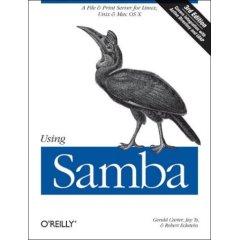| 2020ok Directory of FREE Online Books and FREE eBooks |
Free eBooks > Computers & Internet > Certification Central > Subjects > Networking > Using Samba
Using Sambaby Robert Eckstein  Download Book (Respecting the intellectual property of others is utmost important to us, we make every effort to make sure we only link to legitimate sites, such as those sites owned by authors and publishers. If you have any questions about these links, please contact us.) link 1 link 2 link 3 link 4 About Book Amazon.com Samba, the Server Message Block (SMB) server software that makes it relatively easy to integrate Unix or Linux servers into networks of Microsoft Windows workstations, has to date been mostly explained as an afterthought. Most often, it's appeared in the latter chapters of books about Linux. It deserves better, and the authors of Using Samba have delivered exactly that. This book documents Samba 2.0.4 fully (version 2.0.5, source and binary, appears on the companion CD-ROM), focusing on smbd, nmbd, the command-line tools, and Samba's newfound ability to integrate itself securely with Windows NT domains. Though it includes a bit of information on the SMB and Common Internet File System (CIFS) protocols that underlie Samba, the emphasis here is on setting up and configuring software. Explicit sections explain how to install Samba on a Unix/Linux system and how to set up Microsoft clients to communicate with the Samba machine. The authors pay lavish attention to the Samba configuration file, smb.conf, and explain exactly what settings you need to include in it to allow disk shares, network browsing, and integration with Windows domains. A highly useful reference that lists all Samba configuration options (along with their valid values, default values, and explanations) appears in an appendix. --David Wall Topics covered: All aspects of setting up and configuring Samba 2.0 and its variants, including client configuration, file sharing, network browsing, file system differences between Windows and Unix/Linux, security, and the contents of the Samba configuration file.
This book is the comprehensive guide to Samba administration, officially adopted by the Samba Team. Wondering how to integrate Samba's authentication with that of a Windows domain? How to get Samba to serve Microsoft Dfs shares? How to share files on Mac OS X? These and a dozen other issues of interest to system administrators are covered. A whole chapter is dedicated to troubleshooting! The range of this book knows few bounds. Using Samba takes you from basic installation and configuration -- on both the client and server side, for a wide range of systems -- to subtle details of security, cross-platform compatibility, and resource discovery that make the difference between whether users see the folder they expect or a cryptic error message. The current edition covers such advanced 3.x features as:
Samba is a cross-platform triumph: robust, flexible and fast, it turns a Unix or Linux system into a file and print server for Microsoft Windows network clients. This book will help you make your file and print sharing as powerful and efficient as possible. The authors delve into the internals of the Windows activities and protocols to an unprecedented degree, explaining the strengths and weaknesses of each feature in Windows domains and in Samba itself. Whether you're playing on your personal computer or an enterprise network, on one note or a full three-octave range, Using Samba will give you an efficient and secure server. Book Info Provides a comprehensive guide to Samba administration, including such recent additions as integration with Windows NT domains and the SWAT graphic configuration tool. Softcover. Related Free eBooks | Related Tags |












SEND A COMMENT
PLEASE READ: All comments must be approved before appearing in the thread; time and space constraints prevent all comments from appearing. We will only approve comments that are directly related to the article, use appropriate language and are not attacking the comments of others.